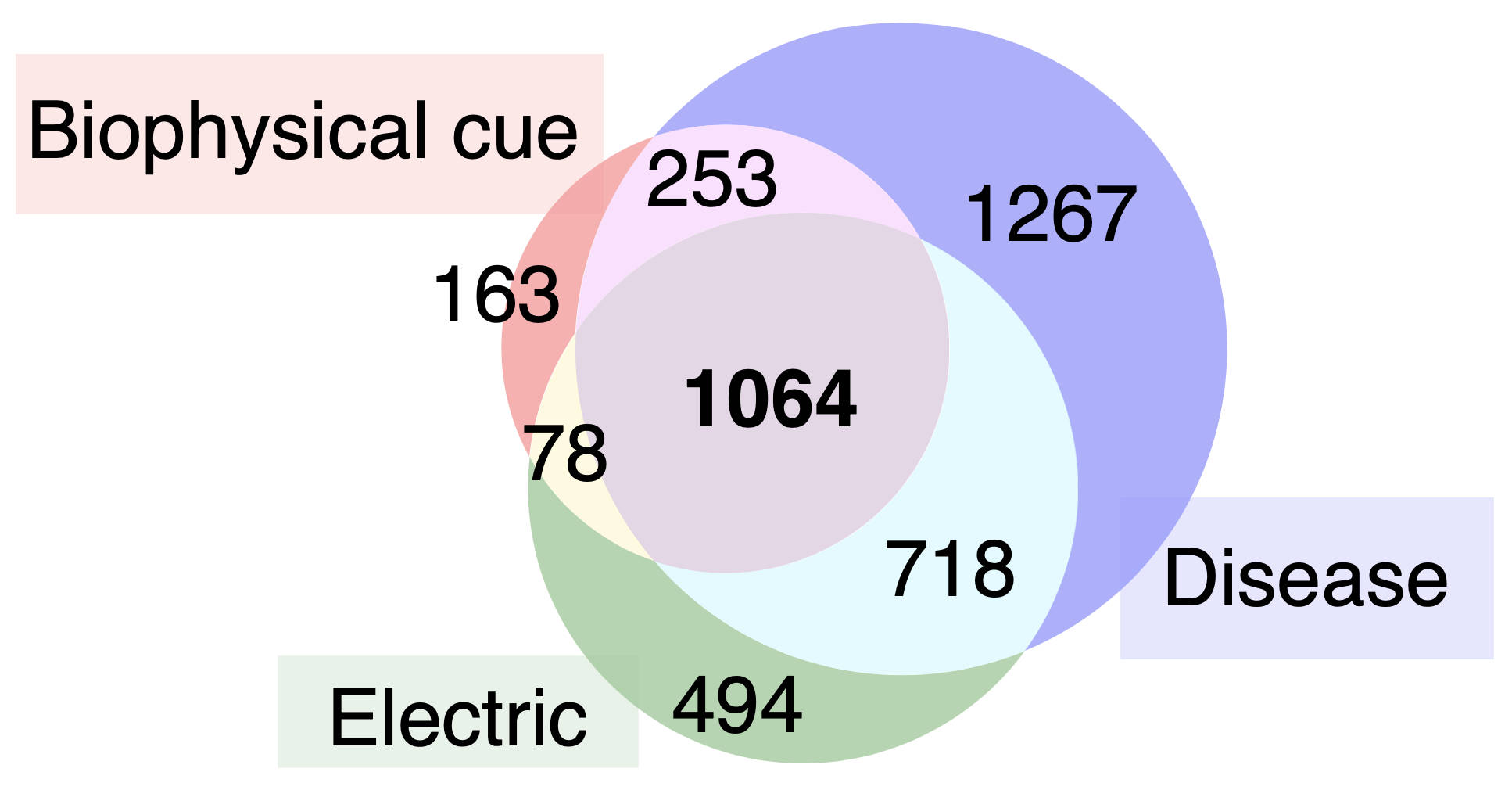Adele Doyle Group
Mechanobiology of Stem Cells

© TUD CMCB, Magdalena Gonciarz
Cells in living organisms are surrounded by physical cues, such as mechanical forces, material properties and electrical cues. These cues vary depending on their location in the body, so that different cells experience a variety of types, magnitudes, and dynamics of mechanical input. The ability of cells to take reliable decisions about cell behavior based on local physical cues is a key component of equilibrium in living organisms. However, the origin of specialized mechanosignaling in cells is not well understood. How do stem cells and other progenitor cells determine how to respond to physical cues in site-appropriate ways? When is specialized mechanosignaling necessary for successful embryonic development and organism homeostasis?
Our group studies how stem cells learn to respond to mechanical forces and electrical cues during the development and maintenance of the nervous and cardiovascular organ systems. We use approaches from biology, engineering, and computer science to study the molecular circuits that enable specialized mechanosignaling. We seek quantitative insights to help design cell and regenerative medicine therapies for neural and vascular applications.
Future Projects and Goals
Our group uses tools from biomedical engineering, regenerative medicine, mechanobiology, and quantitative systems biology to study the mechanobiology of stem cells. Our ongoing and future research investigates the molecular circuits that allow cells to interpret mechanical forces and other physical cues (e.g. electrical cues), which are necessary for human development and health, especially relating to regenerative medicine. We investigate these circuits in the cardiovascular system and nervous system to determine how specialized responses to mechanical forces and physical cues are encoded in cells. Projects often involve both experimental and computational approaches. Collaborations with other groups are welcome.
Methodological and Technical Expertise
- Stem Cells
- Systems Biology
- Engineered Cell Culture Systems (bioreactors, microscale devices)
- Molecular Biology (RNA, protein)
- Computational Biology & Bioinformatics
